Does Windows have a built-in file recovery?
Data loss can be a frustrating but always unavoidable experience. Due to various reasons, such as accidental deletion, hard drive formatting, system crashes, and software conflicts, you may lose valuable files on a Windows PC. When searching for a way to restore data, an official Windows File Recovery is offered. It is designed to retrieve lost files in various scenarios. This article will guide you in learning all the necessary information about the recovery tool.

Windows File Recovery is a free recovery tool offered by Microsoft. The official software can easily restore deleted and lost files in different scenarios. This free command-line utility is available for Windows 10 and 11. It is designed with several advanced recovery options to rescue deleted files from various storage devices, including internal and external hard disks, USB drives, and memory cards.
Windows File Recovery does not provide a graphical user interface. Instead, Windows File Recovery relies on commands to perform related recovery operations. That might be complex for some users, but it offers more control and flexibility for advanced recovery cases.
Windows File Recovery supports commonly used file systems, such as NTFS, FAT, exFAT, and ReFS. That guarantees compatibility with most storage devices. It gives you two main recovery modes: Regular and Extensive. For recently deleted files on your Windows 11 or 10 PC, you can rely on its Regular mode to recover them. Extensive mode is mainly used to deal with more severe data loss situations, such as formatted drives or corrupted file systems. Windows File Recovery allows you to simplify the data recovery process by specifying file names, types, and folders.
To use Windows File Recovery on your computer, it should run a Windows 10 version 2004 (May 2020 Update) or newer. As mentioned above, it is only available for Windows 10 and 11 and doesn't run on older versions. You can easily download Windows File Recovery from the Microsoft Store. Once installed, locate and launch it using the searching feature on your Windows computer.
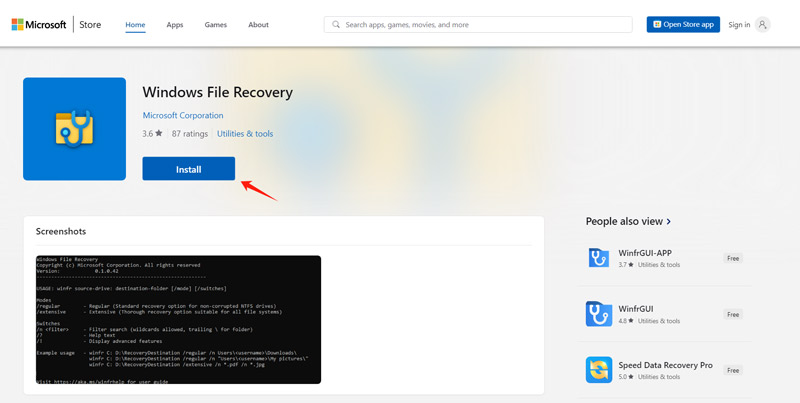
A Command Prompt window will show on the screen for you to run the File Recovery commands. As you can see, the basic command structure for Windows File Recovery contains several main factors, including winfr source-drive, source-drive, destination-drive, mode, and switches.
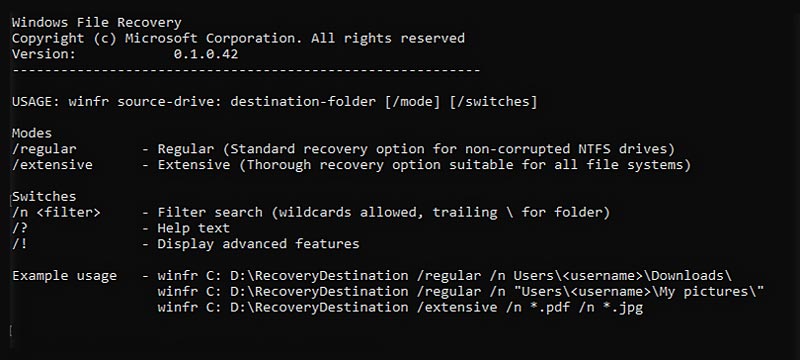
Use the Windows File Recovery to recover data as soon as you notice some important files are lost. What’s more, you should recover files to a different drive than the one you're recovering from. That will increase the chances of successful recovery and prevent further overwriting.
Windows File Recovery lacks a graphical interface to perform the data recovery. That can be a barrier for most users. They are required to learn command-line syntax. If you prefer a dedicated recovery tool to restore your lost data, try using the reliable Aiseesoft Data Recovery. It offers a straightforward recovery way to rescue all types of files from your Windows 11, 10, 8, or 7 computers. You can simply select the hard drive(s) and then find these deleted files by typing their file type or path.
100% Secure. No Ads.
100% Secure. No Ads.
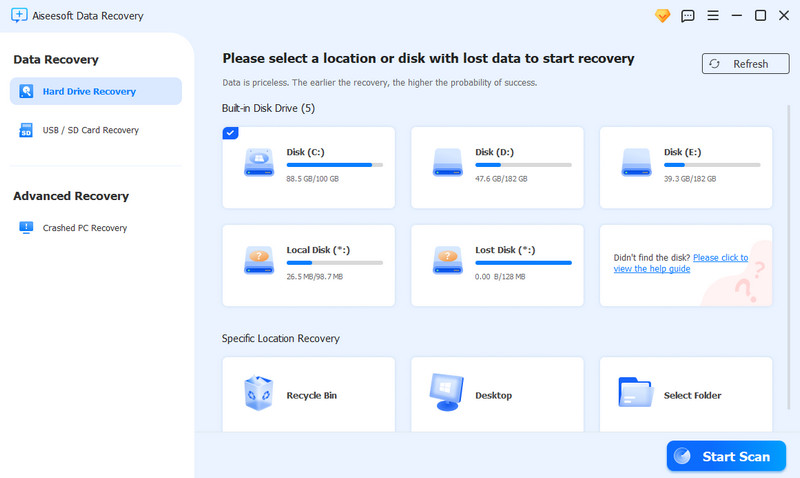
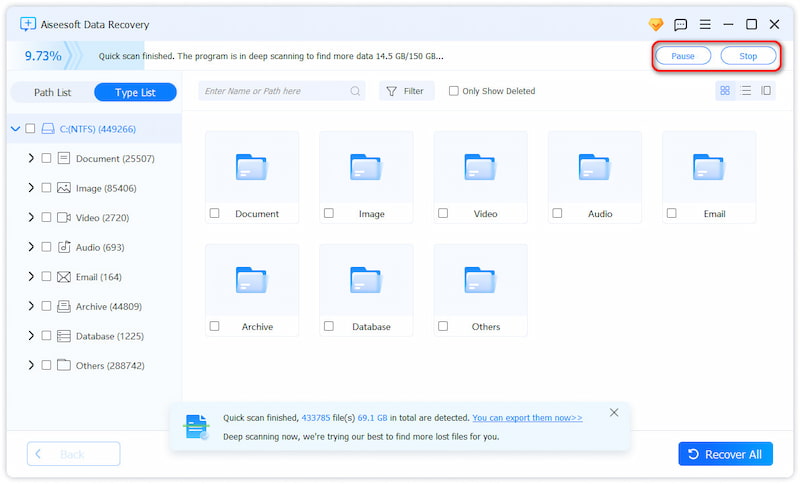
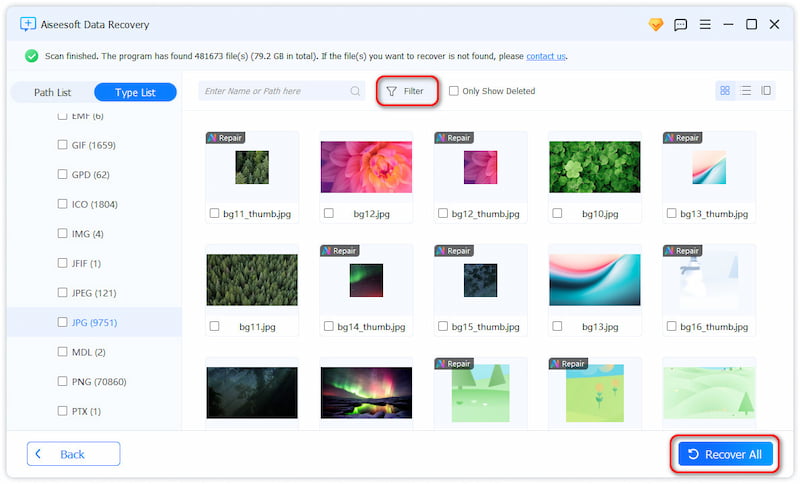
Question 1. Is Windows File Recovery free?
Yes, Windows File Recovery is an official and completely free tool provided by Microsoft. It can be used to restore deleted and lost files on a Windows PC. This command-line app can be downloaded directly from the Microsoft Store without any cost.
Question 2. Why my videos won’t open after Windows File Recovery?
Several reasons may cause recovered videos to be unplayable after using Windows File Recovery. The recovered videos may not be perfectly reconstructed. That leads to corruption and can’t be played normally. The incomplete recovery, incorrect file headers, overwritten data, and other factors may also affect the video playback. You can try using a different media play like VLC to play these restored videos. Moreover, you can use a video repair tool to fix corrupted video files.
Question 3. Can I use Windows File Recovery from Recycle Bin?
Yes, you can use Windows File Recovery to recover files that have been erased from the Recycle Bin. When you remove a file from the Recycle Bin, it is not immediately erased from your computer’s hard drive. Windows File Recovery can scan the drive and restore these deleted files.
Question 4. Can I recover permanently deleted files in Windows 11/10/8/7 without recovery software?
Yes, you can recover these permanently deleted files on your Windows computer without resorting to third-party software. You can choose to restore from previous versions and check if there is a version that contains the lost data. If you have enabled File History on the Windows PC, it might have backups of your files. Moreover, you can restore your entire system to restore deleted data if you have a recent Windows backup. If these built-in options don't work, you may need to rely on dedicated file recovery software for Windows.
Question 5. Does Windows 7 have a file recovery tool?
No, Windows 7 doesn't have a built-in file recovery tool. As mentioned before, the official Windows File Recovery is only available for Windows 10 and Windows 11. When some valuable files are erased on a Windows 7 computer, you can try using System Restore to retrieve them.
Conclusion
As a Windows 11 or 1 user, when you mistakenly delete valuable files or lose important data due to various reasons, you can try using the free Windows File Recovery to retrieve them. While its command-line interface may require some learning, it can deal with data loss scenarios.

Aiseesoft Data Recovery is the best data recovery software to recover deleted/lost photos, documents, emails, audio, videos, etc. from your PC/Mac.
100% Secure. No Ads.
100% Secure. No Ads.